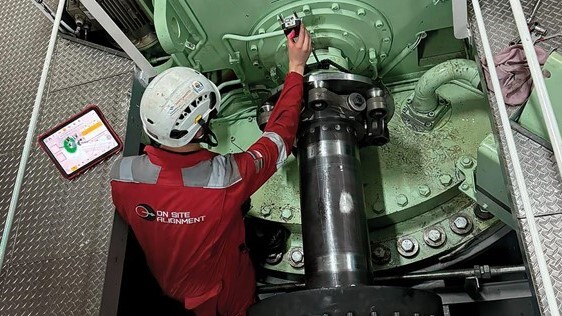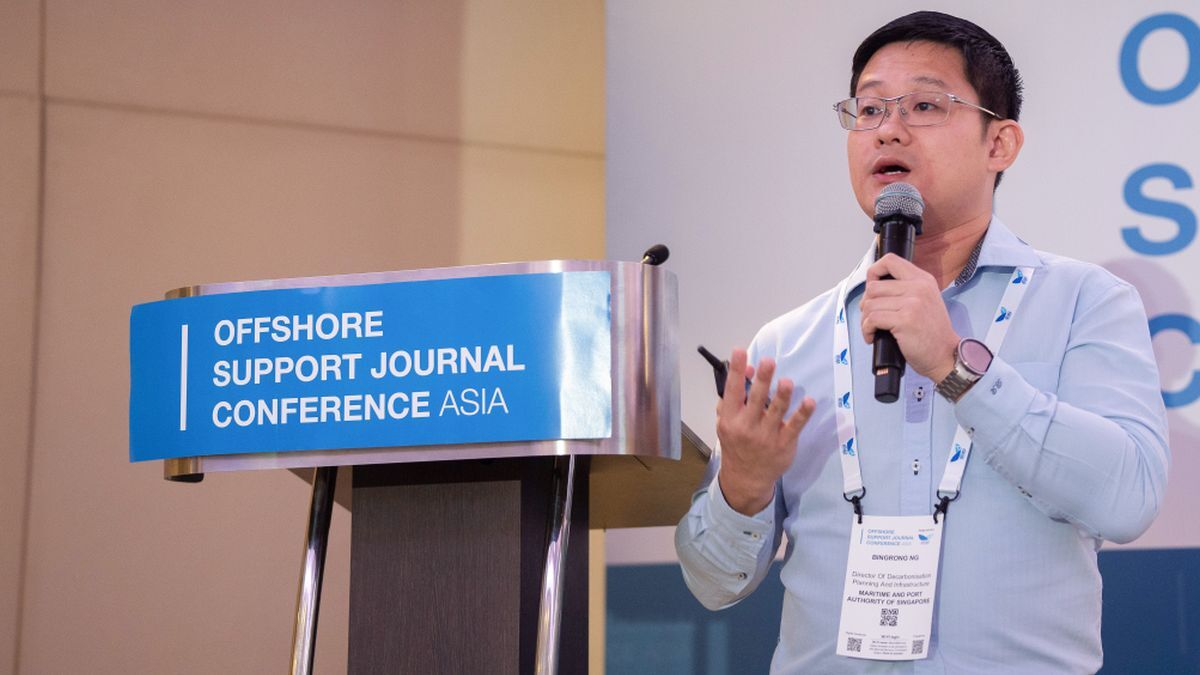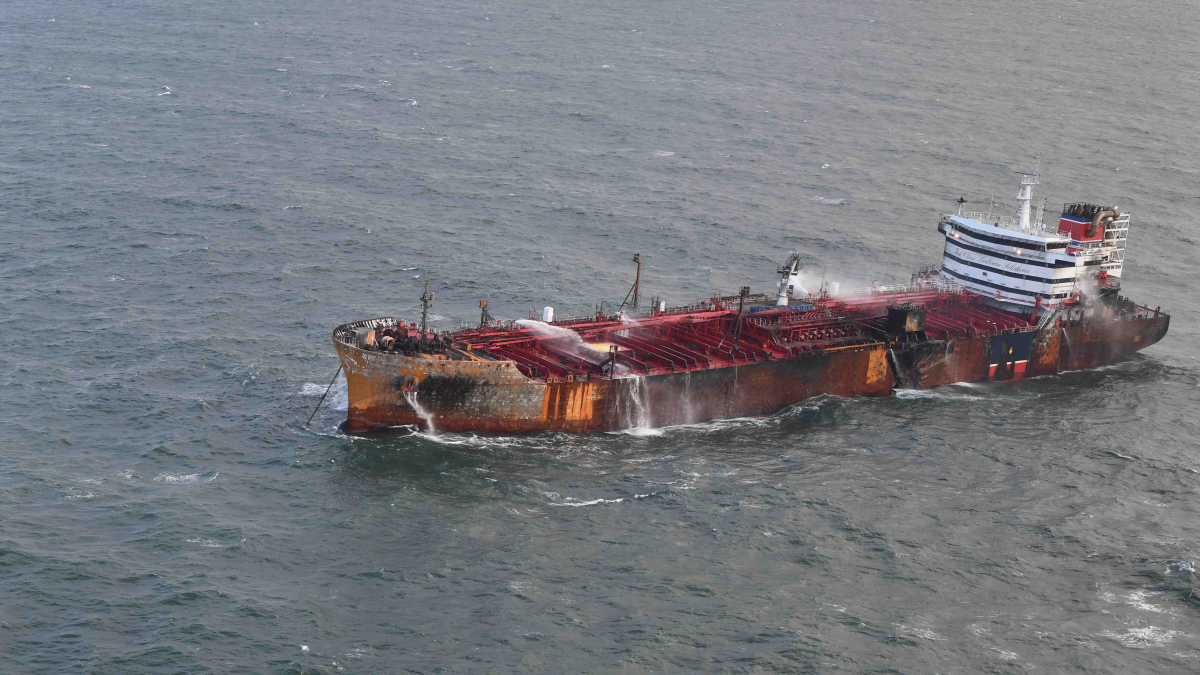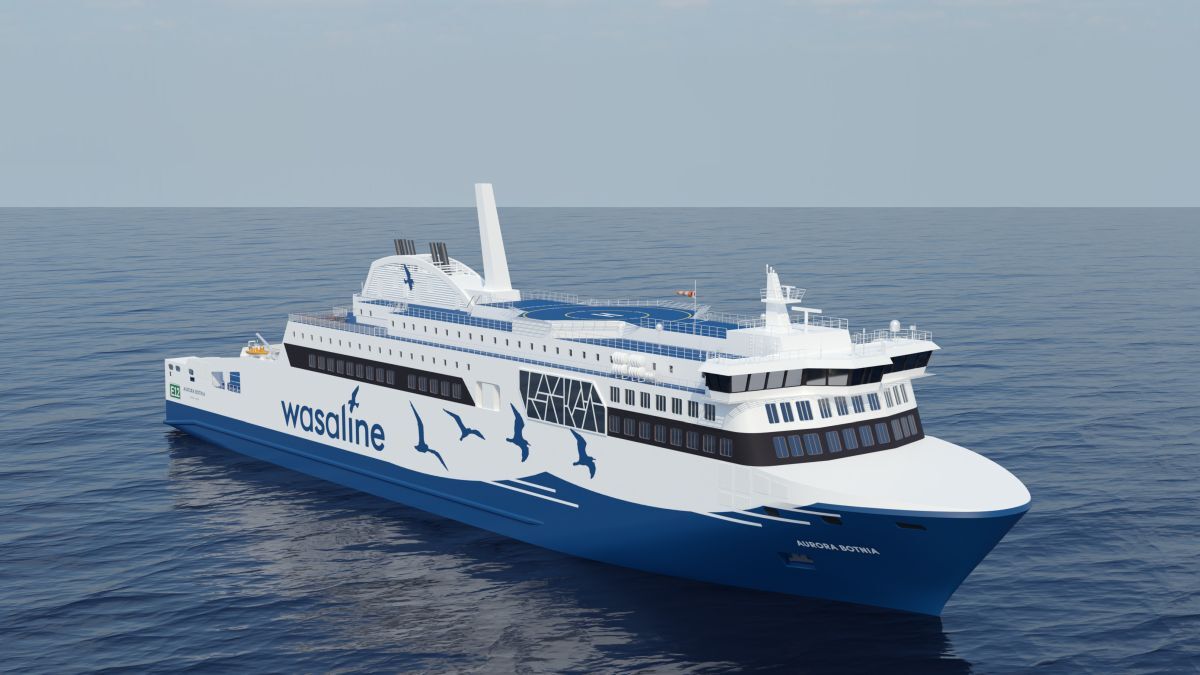Business Sectors
Events
Contents
Register to read more articles.
Singapore prepares for electric vessels, multi-fuel future
Fleets of electric-powered harbour vessels could be built with batteries and fuel cells in Singapore, while the first ammonia-fuelled tugs enter service in the US and Japan
As global port and vessel operators consider their options for decarbonisation, developments in electrification, new fuels and technologies for sustainable operations with lower emissions will improve their choices.
In Singapore, the Maritime and Port Authority of Singapore (MPA) is encouraging investment in shore power, electric-powered harbour craft and infrastructure for delivering new low, or zero-carbon fuels.
MPA’s director for decarbonisation planning and infrastructure in the maritime decarbonisation division, Bingrong Ng, says progress is being made in designing, building and testing full-electric harbour vessels or those capable of running on net-zero carbon fuels in the future.
“There is interest in designing and developing electric harbour craft and we are looking to develop charging standards,” he explains. “We are modelling marine services to optimally deploy charging stations. We are looking at first-hand experience of these facilities.”
He is referring to the station used to charge fully electric Penguin International-owned ferries running workers from Singapore to Shell’s refineries and petrochemical facilities on a nearby island.
When it comes to tugboats and terminals, Singapore’s PSA Marine is interested in technology for reducing emissions, such as batteries, electric drives and azimuth thrusters, but has concerns about the practical application and operation of electric-powered tugs.
Mr Ng says PSA is working with MPA to electrify operations at its Singapore terminals, such as in Tuas and Jurong, including cranes and cargo handling machinery, and perhaps tugboats and pilot vessels.
This includes “using renewable energy to meet the next targets for ports or making an offshore island fully self-sufficient in energy”, says Mr Ng, adding this island could provide power to vessels operating along the coast or to seagoing ships.
“We could use green energy from tidal, wind and batteries to minimise diesel power generation, and we are looking into the feasibility and viability of solar barges to generate renewable energy.”
MPA tendered for designs for fully electric harbour vessels in 2023 and received 55 proposals. “This is down to 11 shortlisted entries,” says Mr Ng. The consortia behind these were asked to enhance designs by optimising hullforms and electrical systems to increase efficiency and reduce power losses, and to lower capital expenditure for building these vessels.
For charging stations, MPA has shortlisted three proposals for DC charging of up to 4-5-MW vessels from fixed facilities on piers and mobile charging units. “We are also looking at battery swapping” as a solution for electric vessels. Mr Ng expects MPA to receive draught references for these solutions in 2025.
The authority is also working with suppliers to increase the availability of biofuels, methanol, ammonia and hydrogen fuels. “Singapore is the world’s largest bunkering hub, so we should be prepared for a multi-fuel future,” says Mr Ng.
MPA is looking at fuel supply standards, safety, licence frameworks, bunkering operations and emergency response to leaks and fires. B50 biofuel is available now and Mr Ng anticipates B100 will be ready within the next two years. The next fuel is expected to be methanol, followed by ammonia. Hydrogen fuel will also be trialled on a vessel in Singapore.
In Q2 2024, Fortescue’s Green Pioneer platform supply vessel demonstrated how ammonia could be used in combination with diesel as a marine fuel while in Singapore.
Electric harbour craft
The first all-electric harbour craft in Singapore is Hydromover 1, which was built as a demonstration for transporting light cargo and crew to ships waiting outside the nation’s ports. Yinson GreenTech and its subsidiary MarinEV were behind the project, and have created a second version of this vessel ready for a commercial contract.
MarineEV managing director Jan-Viggo Johansen says electric harbour vessels could charge at piers and offshore stations.
“Hydromover 1 is the first fully electric cargo vessel in Singapore, built for fast crew changes and transporting 25 tonnes cargo. It comes with swappable batteries to save time in port,” says Mr Johansen.
“Hydromover 2.0 will be available to test for crew and cargo transfer to ships outside harbours from 2025.” It will have a range of 90 nautical miles, achieved by using a different battery density than the first vessel, to reach all Singapore anchorages.
“We are able to reduce Scope 3 emissions with reliable, green vessel solutions and digital reporting,” says Mr Johansen. “We are moving towards taking a bigger part of shortsea shipping and we are also looking at tugs.”
Fuel cells
Also in Singapore, Vallianz Holdings is working to build its first electric-powered tugboat and is considering using technology to increase the range of future vessels.
It has naval architecture for a battery-powered tugboat with a bollard pull of around 30 tonnes but might increase this to 50 tonnes with another design, and potentially use swappable batteries.
Also on the horizon for the Singapore owner is operating a vessel with a hydrogen fuel cell combined with batteries. Vallianz head of engineering Wu Shengwei says electro-chemical engines could be propulsion solutions in the long term due to their higher energy efficiency.
“Fuel cells are getting more attention,” he says. “They burn low, or zero-carbon fuels with no emissions, low vibration and maintenance. They enable vessels to operate a longer distance for higher endurance.”
Fuel cells have an energy efficiency of 60% versus 45-50% of diesel engines. With heat-return, system efficiency is increased to 80-90%, says Mr Wu. He adds the most popular fuel cells involve proton-exchange membranes (PEM).
Around 20 vessels of various types are operating with fuel cells, and this is expected to rise to 37 in 2025, including 28 with PEM units, he forecasts. These are providing varying levels of energy on vessels including dredgers, tugs, workboats and offshore support ships.
“PEMs are mainly used due to them having operational flexibility, a lower size and weight, higher levels of development, and less system complexity and maintenance than others,” says Mr Wu. The other types are solid oxide fuel cells and molten carbon fuel cells – both still in early development and testing.
When PEM fuel cells are applied to harbour tugs, they would be part of an integrated power and propulsion system with batteries and a hydrogen fuel source, such as ammonia or compressed tanks, with a DC grid and DC-AC converters and a power management system.
Ammonia-fuelled tugs
In the US, Amogy has started using ammonia fuel to generate hydrogen to feed into a PEM fuel cell on tugboat NH3 Kraken, which was converted from a 1957-built vessel at Feeney Shipyard in Kingston, New York.
It first sailed on a tributary of the Hudson River on 22 September with Amogy’s ammonia cracking unit and fuel cell on board. Ammonia holds more energy than hydrogen and is easier to store and bunker, but it is toxic and pungent.
Amogy chief executive Seonghoon Woo says NH3 Kraken is a step towards demonstrating ammonia cracking technology for future applications on larger ships.
“Governments across the globe and industry organisations like IMO have set aggressive goals to reduce global carbon emissions,” says Mr Woo. These goals seem daunting, but they are necessary – and our successful demonstration of the world’s first carbon-free, ammonia-powered vessel proves they are achievable.”
During this demonstration, NH3 Kraken is fuelled with green ammonia, produced entirely with renewable energy, further reducing its carbon footprint. This is stored in a 9,100-litre tank fitted inside the old fuel tank space, giving it enough energy to sail 10-12-hours per day at sea. Amogy has already tested its ammonia cracking technology on a lorry, tractor and aerial drone.
“We have gained invaluable knowledge that will help us move quickly to commercialisation and deploy real-world applications,” says Mr Woo. “The opportunity to decarbonise the maritime industry is within reach, and for Amogy, [NH3 Kraken] is just the beginning.”
Amogy is working on contracts with organisations covering potential retrofit and newbuild projects. South Korean shipbuilder Hanwha Ocean is purchasing its technology and HD Hyundai and Samsung Heavy Industries are working with Amogy on ship designs.
Amogy intends to release a case study providing additional technical details in the coming months.
In Japan, NYK and IHI Power Systems Co completed ammonia-fuelled tugboat Sakigake, in co-operation with ClassNK, and it entered commercial operation in Tokyo Bay on 23 August. NYK Group’s Keihin Dock Co converted the 2015-built LNG-fuelled tugboat of the same name for ammonia fuel, with the main engines and fuel-handling system replaced for the new fuel. During Q3 2024, Sakigake underwent sea trials on ammonia fuel, demonstrating safe bunkering and operations on this toxic fuel. During the rest of this year, NYK’s Shin-Nippon Kaiyosha will employ this vessel in tugboat operations in Tokyo Bay over a three-month demonstration period.
This investment was part of the Green Innovation Fund Project, initiated in October 2021 under Japan’s New Energy and Industrial Technology Development Organisation, to develop vessels equipped with domestically produced ammonia-fuelled engines.
Under this project, NYK is also conducting research and development on an ammonia-fuelled medium gas carrier with Japan Engine Corp, Nihon Shipyard Co, IHI Power Systems and ClassNK. This vessel is scheduled for delivery in November 2026.
Sustainable biofuels
In Canada, Ocean Group is taking another step towards greener operations by adopting hydrotreated vegetable oil (HVO) renewable diesel fuel for all its towing operations in ports in British Columbia.
Its supply of HVO is made from renewable sources, including vegetable oils, residues of plant or animal origin and used oils such as those derived from frying.
This fuel has the major advantage of reducing lifecycle CO2 emissions by around 80% compared with traditional fossil fuels, cutting the vessel owner’s carbon footprint.
It has been testing HVO at its Delta Port and Fraser River sites since 2023 and has secured the necessary authorisations from Transport Canada. “After months of data analysis and obtaining the authorisation, we are ready to finalise the transition to this environmentally friendly fuel by the end of 2024,” says Ocean Group.
“Eventually, all Ocean Group tugs in British Columbia will be powered by this sustainable energy source, marking a decisive turning point in our company’s environmental strategy. This change is not just a technical initiative.”
It is part of a wider strategy that underlines the owner’s commitment to reducing the ecological footprint of its marine activities. It comes with the backing of Musqueam Capital Corp, Ocean’s partner on the Fraser River and the Musqueam territory.
This agreement included training members of the Musqueam community in maritime-related jobs and creating career opportunities.
Riviera’s Maritime Hybrid, Electric & Hydrogen Fuel Cells Conference 2024 will be held in Bergen, Norway, 29-31 October 2024. Click here for more information on this industry-leading event.
Related to this Story
Events
Maritime Environmental Protection Webinar Week
Cyber & Vessel Security Webinar Week
The illusion of safety: what we're getting wrong about crews, tech, and fatigue
Responsible Ship Recycling Forum 2025
© 2024 Riviera Maritime Media Ltd.















